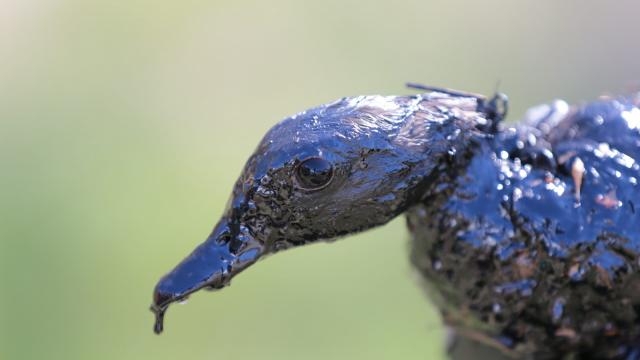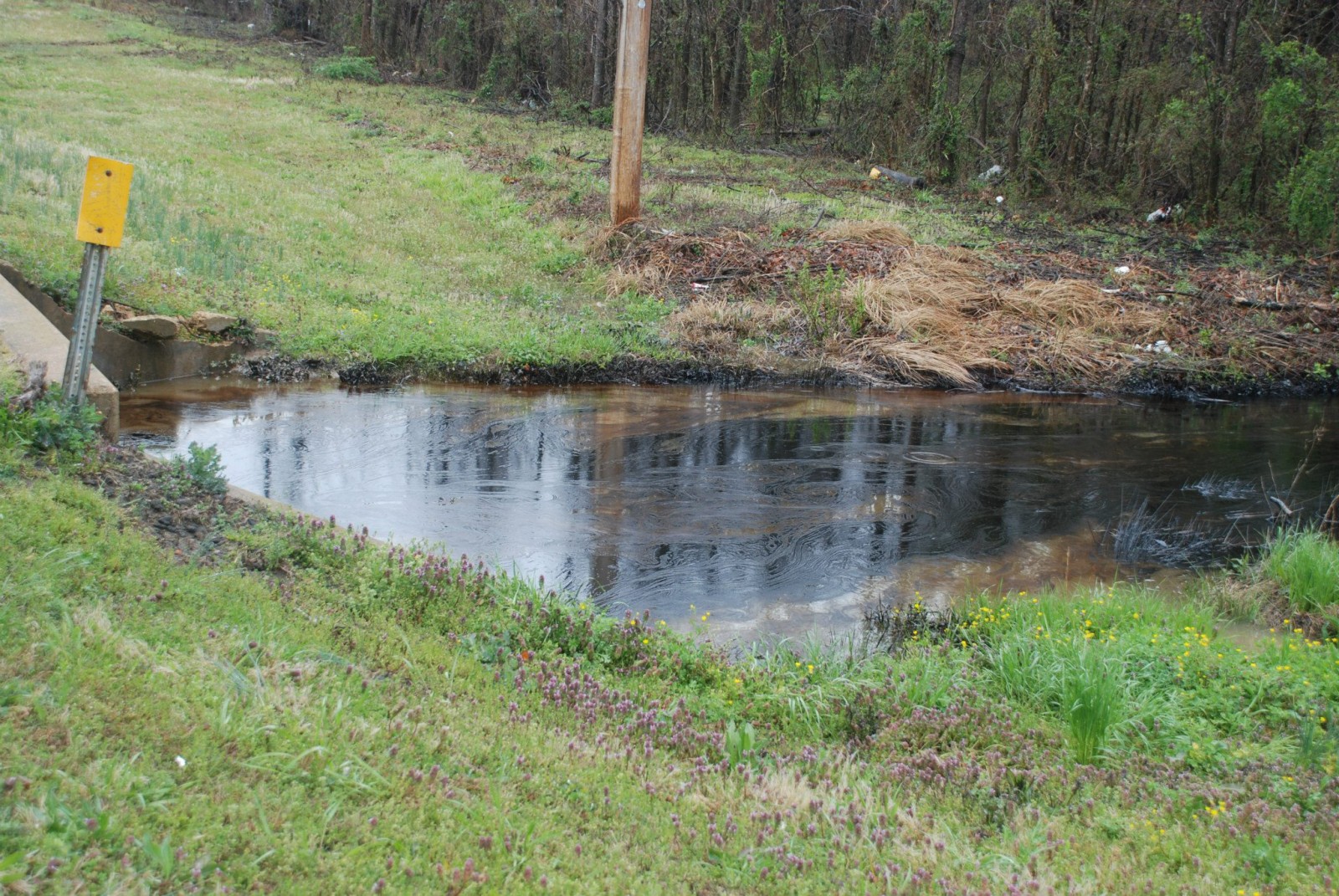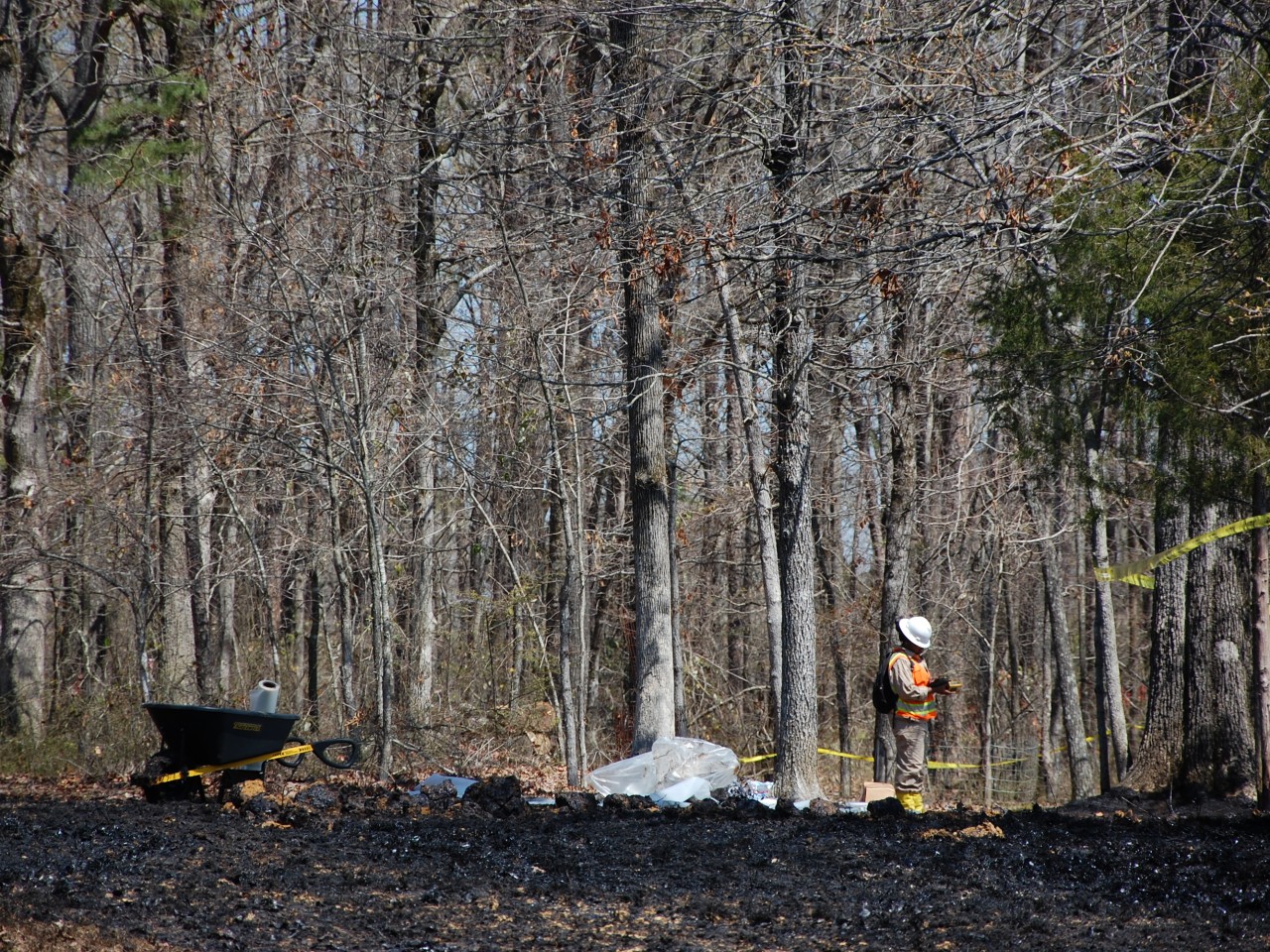
Before going to Mayflower, I had never seen tar sands bitumen in person. I had never smelled it, nor had I experienced how it starts to sicken you the minute you get near it; the headaches, burning throat and fatigue come first, and then the gut-aches, vomiting and diarrhea come later.
When we found the dead, obliterated wetland where Exxon power-washed the bitumen to get it away from the TV cameras (and into the local watershed), it felt like stepping into a nightmare. I can only imagine the hellscape in Alberta of the Athabasca tar sands mine itself: nothing but tortured earth, poisoned lakes, and death as far as the eye can see.
I wasn't surprised by how quickly the world's largest corporation commandeered all levels of government and instituted a kind of martial law in Mayflower, but I won't lie to you and say that it wasn't disheartening. With Exxon calling the shots, Mayflower residents were left to the dogs.
No one was informed about the difference between tar sands bitumen and crude oil and the associated health risks. Aside from a few "lucky" evacuees, most people remained in their homes and got sick. Children at the local elementary school got sick. Workers at a nearby shopping center got sick. Exxon brought in an experienced spill response team (Exxon causes enough disasters to keep these people busy, traveling from one poisoned community to the next), but the actual dirty work was done by underemployed locals hired via Craigslist who handled the toxic sludge without protective masks.
Now Exxon has repaired only the segment of Pegasus which ruptured and intends to soon continue pumping tar sands through the 800 mile long, 65-year old pipe. This is what corporate rule looks like. Real humans live or die according to the dictates of profit.
But here's the good news: Exxon was not ready for us. Their mercenary police force quickly cowed the mainstream media, but we simply ignored their threats in order to show the world what Exxon wanted to keep hidden. We were able to do that because we don't have a corporate structure and were free to take the risks as individuals.
I saw the same dynamic at play in New York after Hurricane Sandy (a.k.a. Hurricane Big Oil), when corporations like the Red Cross - bureaucracy-laden and run by wealthy executives - were massively outpaced and outperformed by grassroots activists with Occupy Sandy and other groups.
Tar Sands Blockade met its short term goal of getting past Exxon's media blackout, but long-term, we're still working to build networks of support and mutual aid between Mayflower residents – many of whom are still sick and now must worry if it’s safe to hunt, fish, garden, or raise children – and communities here in Texas and around the country.
Therein lies our best hope. Not in money, or politicians, or somehow reforming the corporate hierarchies and power structures which got us to this point, but people power: organizing ourselves to build the world we wish to see.
In order to survive the coming storms and struggles of the twenty-first century, the movement must support itself. When the media doesn't tell the truth, we will create our own media. As industrial monoculture fails, we will learn to produce our own food. When the climate storms rage, we will come together to rebuild and support each other. Our grassroot collectives and coalitions will be the mammals that outlast the corporate dinosaurs, and we will build our own solutions based on cooperation and solidarity rather than domination and exploitation.
Exxon, TransCanada and the rest of the dirty energy industry may seem like massive, unbeatable foes, but we know that isn't true. They have no conception of the true potential of people-power, and they are not ready for us. Our movement is growing, and their days are numbered.
Originally published by Tar Sands Blockade.
3 WAYS TO SHOW YOUR SUPPORT
- Log in to post comments













